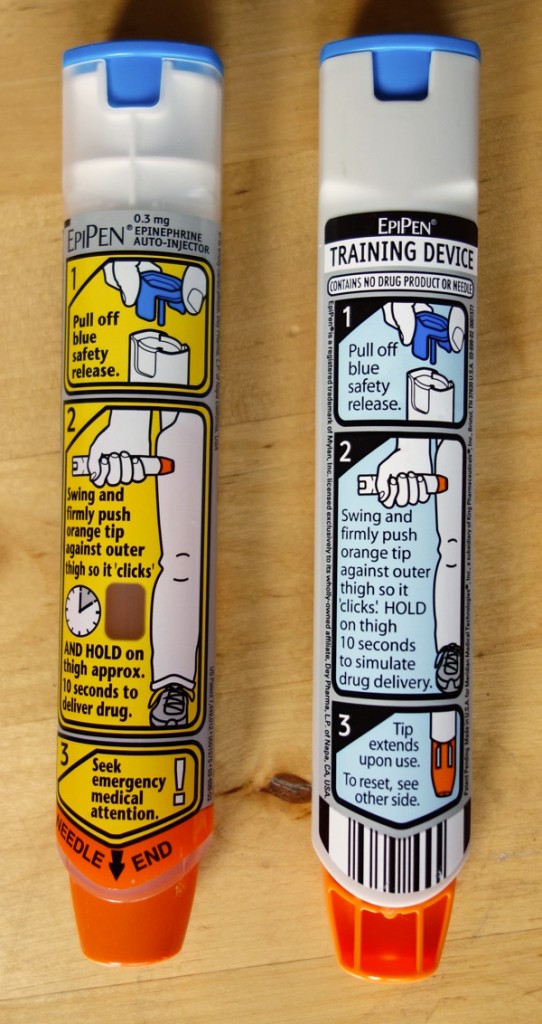Bee Venom & Training Devices
2012-08-18
by Richard White
It wasn’t always that way. Growing up, I got stung by my share of bees, and hornets, and yellowjackets. I recall one particular time when I was riding down the road on my motorcycle when I happened to catch a bee in the neck of my t-shirt, and a sudden sharp sting on my back. I pulled over at a rest area, went in to the bathroom, and took off my shirt to see in the mirror the bee’s barb, and the little venom sac dangling at the end of it. I’d been stung, but it wasn’t more than a slight, painful swelling.
I’m not sure when I developed an allergy–I’m told that repeated exposures to venom can precipitate this–but when a bee sting, over the course of a couple of hours, turned my hand into a big round softball, I knew something had happened. I walked away from the emergency room with a shot of antihistamine and a prescription for an epi-pen, which one can use to administer a quick dose of epinephrine in the event of a sting.
Cool.
You have to get a new epi-pen every couple of years. This last time there was an extra pen in the pack, which turned out NOT be a “limited time, two-for-one” offer, but rather a “training device.”
This thing is amazing. It looks just like a real epi-pen, from the shape and coloring to the little blue cap you have to pull off before jamming the thing into your thigh. Now I’ve actually used an epi-pen before, and it’s not hard to do, but it’s true, there’s a little bit of trepidation going in the first time you try it. Part of it’s the idea of a needle going in to your body—”that’s not going to be fun,” you think—but a good part of is more of a general anxiety: “Am I doing this right?” How hard should you swing the pen so that it works right? I mean, I saw Pulp Fiction, and everybody knows you have to swing pretty hard to pierce that area over the heart, right?
So this training device is a little bit of genius. It gives you a way to practice administering the injection in a non-threatening context, and lets you get used to the idea of this thing that otherwise might be kind of scary. That’s awesome.
You probably already know where we’re going with this, right? Just as the Training Device acts as a model for that Authentic Assessment that shows up in the form of a bee sting, it’s important for us to provide Training and Models for our students.
In particular, technology-based delivery of materials can be of enormous benefit to kids who are desperately trying to figure out just exactly what it is that we’re asking of them.
Whether its a rubric that lets kids know how they’re going to be evaluated, or a practice test [PDF download] that gives them an idea of the format of questions, examples of acceptable work from previous students, or a quiz that gives them a low-grade stress situation that they need to manage, Practice Makes Perfect. It’s our job as teachers to provide students with opportunities to practice, as well as giving them ridiculously clear instructions on what our expectations are for an assignment.
Otherwise, how are they to know?
